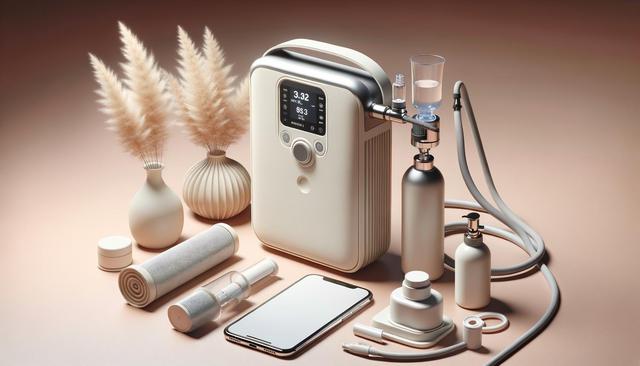Understanding Portable Oxygen Concentrators
Portable oxygen concentrators are compact medical devices designed to provide supplemental oxygen to individuals with respiratory disorders such as chronic obstructive pulmonary disease (COPD), pulmonary fibrosis, and other conditions that impact lung function. These devices work by filtering surrounding air, removing nitrogen, and delivering purified oxygen to the user through a nasal cannula or mask. Unlike traditional oxygen tanks, which store a finite amount of oxygen, portable concentrators generate oxygen continuously, making them a practical solution for active individuals who need mobility and consistent oxygen support.
One of the major advantages of portable oxygen concentrators is their ability to operate on batteries or through a connection to a wall or vehicle power outlet. This makes them particularly valuable for travel, outdoor activities, or simply moving around the house without being tethered to a stationary unit. Many models also feature adjustable oxygen flow rates and user-friendly digital displays, allowing patients to tailor their therapy to their specific needs.
Key Features to Consider
When selecting a portable oxygen concentrator, it’s important to evaluate several features to ensure the device aligns with the user’s lifestyle and medical needs. Some of the most commonly considered features include:
- Battery life and charging options
- Weight and portability
- Oxygen delivery method (pulse dose vs. continuous flow)
- Noise level during operation
- Ease of use and interface design
Pulse dose concentrators deliver oxygen when the user inhales, making them more energy-efficient and suitable for many users with moderate oxygen needs. Continuous flow models provide a steady stream of oxygen and may be necessary for those with higher or more consistent requirements. Additionally, lightweight models with longer battery life can significantly enhance the user’s ability to travel or engage in social activities comfortably.
Advantages for Daily Living
Integrating a portable oxygen concentrator into daily life can offer greater freedom and improve overall quality of life for many individuals. These devices are designed to be discreet and easy to carry, often coming with carrying cases or travel carts. This allows users to:
- Attend social gatherings and public events
- Run errands and go shopping
- Travel by car or airplane (many models are FAA-approved)
- Engage in light physical activities such as walking or gardening
Such flexibility can have a significant psychological benefit, helping individuals feel less restricted by their condition and more in control of their daily routines. For caregivers and family members, portable concentrators also reduce the logistical challenges of managing oxygen therapy, making it easier to support their loved ones.
Maintenance and Safety Tips
Proper maintenance of a portable oxygen concentrator is essential to ensure it functions effectively and safely. Users should follow the manufacturer’s guidelines for cleaning and upkeep, which typically include:
- Regularly wiping down the exterior with a damp cloth
- Cleaning or replacing filters as directed
- Checking battery levels and ensuring timely recharging
- Storing the device in a cool, dry place
It’s also crucial to follow safety precautions, such as keeping the concentrator away from open flames and not smoking near the device. Regular check-ups with a healthcare provider can help assess the effectiveness of the therapy and make necessary adjustments to oxygen settings or equipment. If any unusual sounds or performance issues arise, users should consult with a technician or the supplier to address potential problems promptly.
Choosing the Right Device
With a variety of models available, selecting the right portable oxygen concentrator can be a collaborative process involving the patient, their healthcare provider, and a medical equipment supplier. It’s important to consider current and future oxygen needs, lifestyle preferences, and budget. Some suppliers offer rental options or financing plans, which can make it easier to access a quality device without a large upfront cost.
It may also be helpful to read user reviews and consult with respiratory therapists about their experiences with different models. While no single device fits every user perfectly, many individuals find that certain models are particularly well-regarded for their durability, ease of use, or support services. Ultimately, the goal is to find a unit that supports the user’s health while fitting naturally into their daily life.


